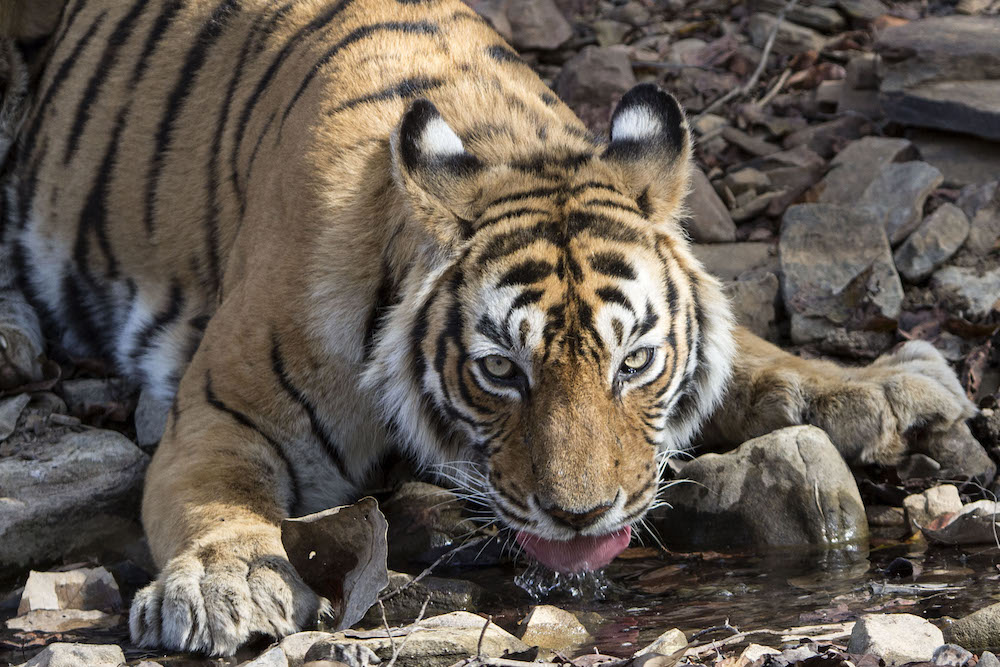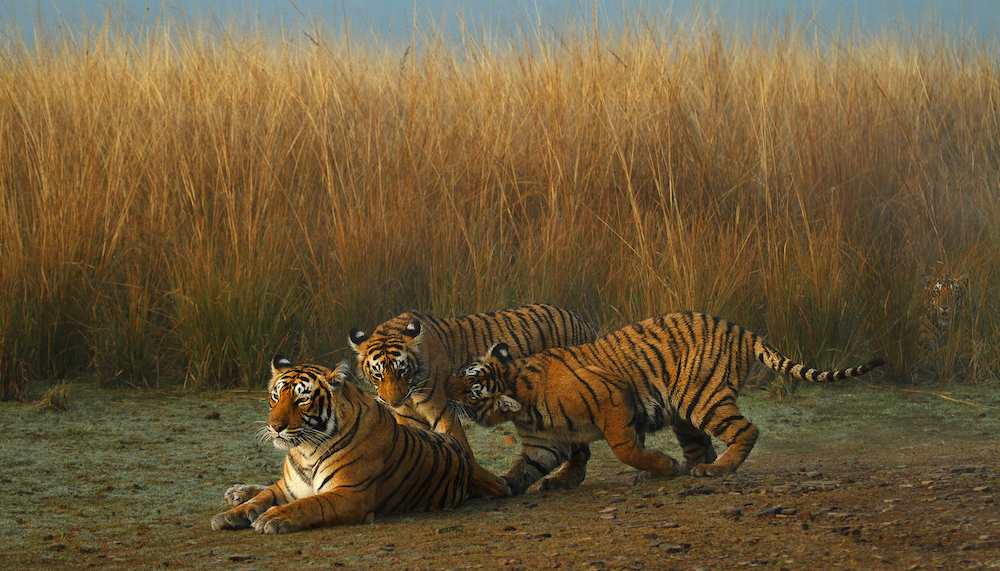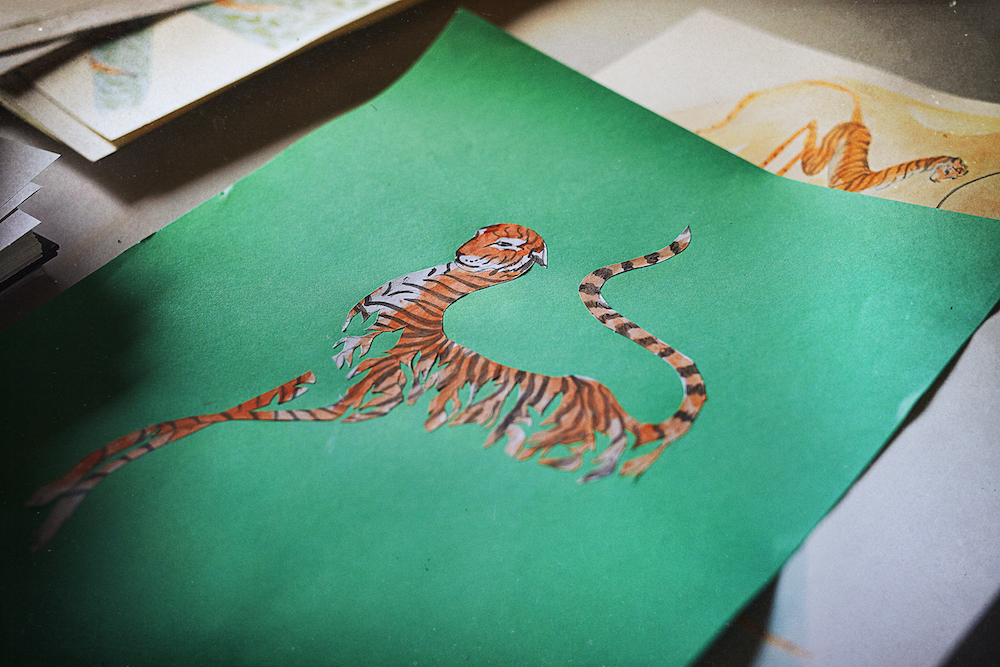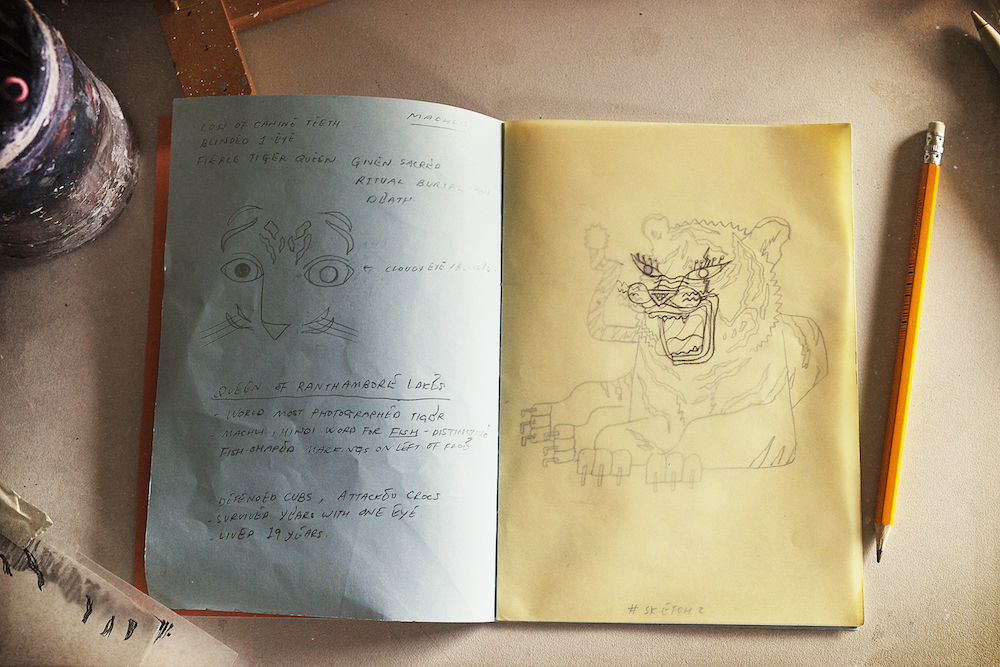#culture / #travel
WWF’s Michael Baltzer on how we can save the world’s tigers
BY #legend
September 3, 2018
Wild tigers face extinction due to the loss of their natural habitats and illegal trading of their body parts. The world’s wild tiger population has declined by more than 95 per cent over the past century and it is estimated that an average of two tigers are killed per week in Asia due to poaching, and that data is only based on seizure numbers, so it’s hard to imagine the unknown. As a vessel that’s merely co-living with other species on Planet Earth, we seem to have gotten ahead of ourselves and into the habit of taking our balanced ecosystem for granted. Without wild tigers, our ecosystem will be disrupted – and most people don’t seem to understand the impact. Luckily, the world has Michael Baltzer, leader of the WWF’s Tigers Alive Initiative, who is devoting his life to the cause of tiger conservation.
Following the success of the #3890 campaign last year, a campaign under WWF’s Tigers Alive programme initiated by WWF and Tiger Beer, this year the partners have recruited support from French fashion house Kenzo to once again work towards the goal of tiger conservation by driving forward the Tx2 initiative, a global goal to double the wild tiger population by 2022. Through empowering communities via collaborative approaches to conservation, this year’s campaign utilises the power of fashion as a universal language to launch the Rare Stripes collection and bring individuals closer to the stories of wild tigers through the agency of fashion and creativity.
Can you tell us more about the Tigers Alive programme?
Tigers Alive is the WWF’s global tiger conservation programme, focused on ensuring that global wild tiger populations can recover and thrive in the long term. A key part of achieving this includes protection of their natural habitats through ending illegal wildlife trade, and by securing protected areas and biological corridors where tigers roam. Anyone working on tiger conservation throughout the WWF network is a part of the Tigers Alive Initiative, helping to drive forward Tx2, with the global goal of doubling wild tiger numbers by 2022 for the next Chinese Year of the Tiger.
The Tx2 initiative is one of the world’s most ambitious conservation goals ever set for a single species. How is the target looking so far?
In 2010, 13 tiger-range governments came together at the St Petersburg Tiger Summit to commit to the Tx2 goal. Back then, the world’s wild tiger population had hit rock bottom – it was the lowest it had ever been. At an estimated 3,200 tigers in the wild, it meant that we’d lost nearly all the world’s tigers, compared to what experts believe could have been around 100,000 wild tigers in the early 1900s, just about a century ago.
We are now past the halfway mark of the Tx2 goal to double tiger numbers in the wild and there is much reason to believe that we are on the right track. Since 2016, the estimated global tiger population stands at around 3,900 – this was the first time that we have seen a pause in the decline of tiger numbers and possibly an increase. With only a few more years to go, we have no time to lose. This global and concerted effort with governments, businesses and communities of people involved is our best chance at ensuring that wild tigers will have a future alongside humans.
What’s your most memorable experience since working on the programme?
I really can’t point to just one moment in time – it’s been nearly nine years since WWF has been supporting the Tx2 goal and it has been an incredible journey to be on! If I had to pick one, I think among all my experiences, I have to say it’s the sheer diversity of people who are working to support tiger conservation, and the passion and deep conviction they show. They have really inspired me.
This is from the forest guards and rangers who sacrifice time with their families to protect wild tigers and our natural heritage in some of the most remote areas in Asia to young people so passionate about the cause that they influence their friends and family with their enthusiasm and energy, helping to raise awareness and engage more supporters. Through the Rare Stripes campaign, I’ve also met amazingly talented artists behind the designs of the limited edition collection. Their unique contribution to tiger conservation reminds me that saving wild tigers is really a global goal – one that could use everyone’s talents and gifts.
What’s one thing about tigers that you think everybody needs to know?
We see tigers in our lives almost everywhere – as powerful and beautiful creatures, they are used for advertising on billboards, as inspiration for fashion motifs and definitely as brand icons of premium products. Yet, tigers in the wild are endangered. It’s time for brands and supporters to start giving back, and we have seen this happening with Tiger Beer taking the lead. Now with fashion powerhouse Kenzo on board, we’re inviting more tiger-loving brands and supporters to jump on board. If we don’t want to see wild tigers disappear from the planet, we all need to act now.
Can you tell us more about the illegal tiger trade and the impact it has?
Aside from habitat loss, the illegal tiger trade is the most serious and immediate threat to the world’s wild tigers. Tigers are brutally killed for all their body parts – from the skin desired for decorations such as rugs or clothing to bones, teeth and claws used in medicines, health tonics and talismans. They are hunted down with guns and with metal and wire traps that leave the tiger injured and starving. Once a tiger is dead, its body parts travel on a journey through the criminal world until they reach the consumers who are buying them illegally – mostly in Asia.
Between the years 2000 and 2015, the parts and products of at least 110 tigers a year were seized in Asia – that equates to an average of two tigers killed per week. This is only a conservative estimate, as it is based on seizure numbers, and we can surmise that there are more tigers killed whose parts are not seized by authorities. Tiger parts are sold for commercial profits, often involving international organised criminal networks. Today, the illegal tiger trade and the wider problem of wildlife trafficking is worth an estimated US$20 billion per year.
What is the most shocking story you’ve heard or witnessed about tigers?
Despite having worked on global tiger conservation for nearly a decade, it is still shocking to me that at least two tigers are killed each week for the illegal tiger trade. As mentioned, this is only a conservative estimate. Tigers in the wild are being killed by poachers with guns, poison and brutal traps that keep them ensnared for days of injury and hunger, while on “tiger farms”, they are kept captive and bred for their skin and bones.
What would happen if we lost all the tigers in the world?
In nature, everything is connected. Protecting tigers protects so much more, including all the essential goods and services we all need from nature. Tiger conservation provides unseen benefits that are critical for wildlife, people and sustainable development. Tiger landscapes harbour a wealth of critically important goods and services that millions of people rely on, from mitigating climate change and safeguarding freshwater to reducing the impact of natural disasters and improving the health of local people. Hence, if we lost the world’s wild tigers, we would start seeing an erosion of these natural benefits that we all rely on, which would be disastrous for thousands of wildlife species and millions of people.
Can you tell us some tiger conservation highlights the WWF has helped achieved so far?
In order to support the ambitious Tx2 goal, WWF has transformed the way we work on tiger conservation. WWF works through systemic and innovative approaches that involve governments, businesses, conservation organisations and local communities as key stakeholders. The increase in global tiger numbers based on the 2016 tiger population estimate is just one indication that progress is being made on the ground. Increasing monitoring and improving techniques are fundamental steps in professionalising tiger conservation in the field; we can see this happening across South Asia, China, Russia and some parts of Southeast Asia.
In China, where tigers are deeply embedded in the culture, there were thought to be no more than 20 wild Amur tigers in 2010. Even among this small population, all of them are likely to have crossed over from Russia and none were breeding females. But in 2014, our camera trap footage revealed a mother tiger and two cubs in the Jilin Wangqing Nature Reserve, showing that Amur tigers are breeding in China again! This positive news is an indicator of improved management of the tiger reserves, which the WWF has strongly supported.
Can you tell us more about the Rare Stripes collection?
Fashion is a powerful way to spread the message of tiger conservation and the Rare Stripes collection aims to use fashion to connect people to the real, wild animal behind the icons that we see every day. In year two of the partnership, Tiger Beer and the WWF partnered with French fashion house Kenzo to bring the stories of real tigers in the wilderness to people on the streets of cities.
Kenzo was a natural fit for this campaign, not only because the face of a tiger is a recognisable feature of the brand’s iconography, but also because the people behind the brand are passionate about wildlife conservation. Together with Kenzo’s co-creative directors, Humberto Leon and Carol Lim, Tiger Beer handpicked four emerging artists, two of them from tiger-range countries, to collaborate with Kenzo. These included contemporary artist and sculptor Meryl Smith (from the US), illustrator and designer Esther Goh (Singapore), illustrator and printmaker Julienne Tan (Cambodia), and visual and digital artist Sean Lean (Malaysia). The collection comprises eight individual designs, inspired by eight iconic wild tigers and their stories.
How is this year’s campaign different to last year’s?
Both campaigns are all about raising mass awareness and more funds to help double the number of tigers in the wild. In 2017, the #3890Tigers campaign invited people from around the world to take a stand against the illegal tiger trade by merging their selfies with one of six bespoke tiger artworks created by global artists using the power of artificial intelligence technology. This year, we’re using the vehicle of fashion to connect urbanites with the plight of wild tigers through real-life stories of wild tigers that are woven into the designs of the limited edition Rare Stripes collection.
How will working with a fashion house like Kenzo help with tiger conservation?
Our partnership with Tiger Beer and the subsequent collaboration with Kenzo on the creation of the Rare Stripes collection means we can leverage these brands’ global reach to engage and inspire consumers, as well as generate awareness at scale and help raise funds in the support of doubling wild tigers by 2022.
How can the Rare Stripes collection contribute to global tiger conservation efforts?
The Rare Stripes collection is important for generating awareness on the plight of wild tigers among young people and fashion consumers, who have the power to influence brands and governments, and who can help spread the message. The collection aims to empower people with knowledge on the importance of wild tigers and how individuals like you and I can help. All proceeds raised from the sale of this collection will go towards the WWF to support efforts in doubling the world’s wild tiger population – making every garment in the collection a direct contribution to saving wild tigers.
What can we all do to help or contribute?
The global effort to double the world’s wild tiger numbers needs massive and sustained support – from governments and businesses to local communities living near tigers, and to people like you and I. Every single person can contribute to tiger conservation. You can play a key role by making a conscious choice to buy sustainably sourced products, such as coffee, rubber and products that contain palm oil, that are not destroying tiger habitats. As tourists, make sure you are not visiting “tiger farms” – illicit facilities that trade in tiger parts illegally – and do not buy illegal tiger parts.
Anyone can help by symbolically adopting a tiger with the WWF – by doing so, you will help us protect the forest homes of wild tigers, stop the killing of tigers and break the chains of illegal tiger trade, and empower local communities with better livelihoods and knowledge as stakeholders in tiger conservation.
This feature originally appeared in the September/October 2018 print issue of #legend


















































